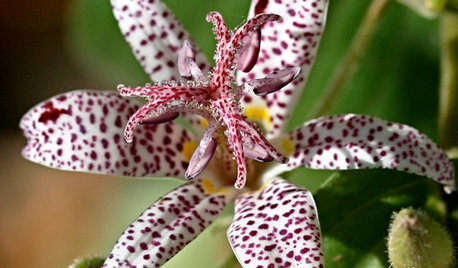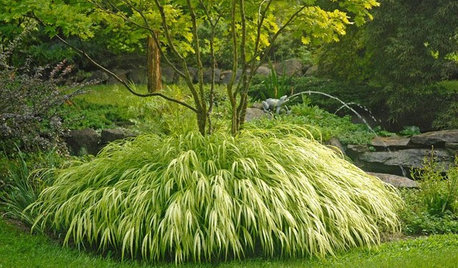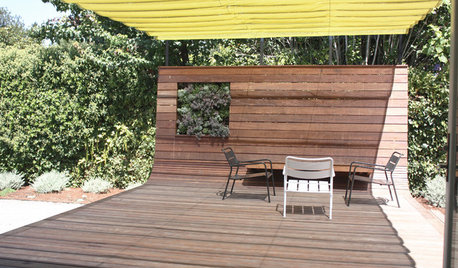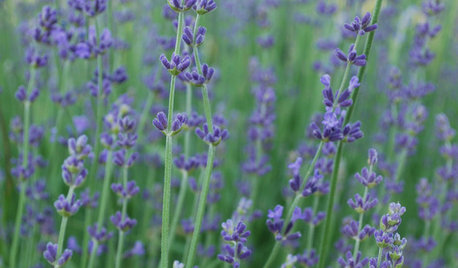Is there anything to love about perennial rye?
rutgers1
16 years ago
Featured Answer
Sort by:Oldest
Comments (27)
morpheuspa (6B/7A, E. PA)
16 years agoquirkyquercus
16 years agoRelated Discussions
Turf Type Perennial Rye anyone?
Comments (40)Wow, I was surprised to see this thread still alive. Here's the recap on what happened last year: The 2007 June-July-August heat and drought combined with a vacation basically killed the TTPR after it had been fantastic in the fall and spring, so when I was deciding whether to repeat the experiment by overseeding (really starting over) in year 2, I decided to change to the more drought/heat tolerant TTTF and try to find some cultivars with a thinner blade and dark green color. Of course, this spring of 2008 has been plenty wet and not too hot thus far, so any cool season grass would likely be doing very well at the moment, as is the TTTF. I will try to post some pictures soon. It has been filling in nicely, but is still clearly in year 1. It has a lot of maturing to do. One thing for certain, the TTPR grew MUCH faster that the current TTTF - I sure do not miss the cutting 3-times a week I had to do last spring. I now have the annual weeds under control and my current plan is to aerate and overseed again at labor day with some more TTTF. Last summer demonstrated that TTPR in the transition zone is water dependent, which made it a high-maintenance, and generally poor chooice for the drought last summer....See Morebest Perennial Rye cultivars?
Comments (2)The NTEP site for WA lists 06 data. Here are a few and I'd say any blend with 1 or more of these cultivars would be pretty good. ASP6002 (BPR), CABO II (IS-PR 233), DELAWARE XL (PICK 01-2), CALYPSO 3 (MS2), APR 1648, GRAY STAR (PST-2LGL), PLEASURE SUPREME (PM 103), CUTTER II (PM 101), PM 102, ASP6005 (AJM), D04-11T,FIESTA 4 (PICK F4), HALO (KN42), PALACE (IS-PR 273), SR 4600 (SRX 4SP), SUNSHINE 2, ASP6003 (TRS), D04-1667, DP 17-9499,EXACTA II GLSR (LTP-611-GLSR),GL-2, MACH I, PRESIDIO (CNV), TR47, 1G SQUARED (APR 1664), ASP6004 (EXS54),ASP6006 (LPFG),BAR LP 4920, DERBY XTREME (IS-PR 268),GALATTI (DP 17-9502), MMW, PIZZAZZ, EDGE II (AC2), FIREBOLT (PRG HS-01-09), GPR, HOMERUN (RG3P),KOKOMO II (IS-PR 235),LINE DRIVE GLS (APR 1797),PALMER IV, SILVER DOLLAR ,AMAZING GS (IS-PR 276),BUENA VISTA, CHARISMATIC II GLSR (LTP-PG-GLSR However I'd take the NTEP ratings carefully. If you check the maintenance schedule it may not match how you keep the grass. I have a bag of Lesco's certified rye blend on hand for the fall, so I can't report specifically on it now, but will next spring....See MoreWhy not perennial rye and KBG?
Comments (6)+1 bpgreen. They have different habits, growth rates, water requirements, and fertilizer requirements, too. There's nothing wrong with mixing them, but the results to a Lawn Whacko are somewhat disappointing. The average person would probably be fairly pleased. Bluegrass lawns require tremendous patience, and even the patient get IMpatient when Day 12 dawns and the stupid lawn has maybe ten percent color and you're pouring water on it and the weather refuses to cooperate... But I digress. :-) I know I just have to wait and in another week to 10 days I should have the start of a nice lawn. Now imagine that in the average Joe or Josephine. Joe isn't going to tolerate that, he microwaves his dinner and wants the lawn NOW. Hence the ryegrass, which pops up in five to seven days tops compared to KBG's 14 to 21 days. At that point, Joe stops watering (we're talking the average person here) and gets some of the KBG but not all of it. That's OK, the rye does well enough. Rye also fights chemical wars with surrounding plants to make sure it's the only thing growing. It can't kill an established plant, but it will keep other seeds from germinating. New rye probably doesn't do a good job at that, but future overseeding with anything but rye becomes difficult. Look up "alleopathy" if you're interested in learning more....See MoreAnything to do for my perennials with the Cicadas coming?
Comments (4)Cicadas don't eat in the adult winged stage. The damage they do is from cutting slits in tree branches and some bushes to lay their eggs. The young nymphs drop to the ground and bury themselves and feed on tree roots until they are ready to emerge as adults. Pencil sized branches and young trees are at risk, but they won't harm your perennials. (We had them a few years ago here.) Marcia Here is a link that might be useful: article on cicadas...See Moremorpheuspa (6B/7A, E. PA)
16 years agorutgers1
16 years agokatdog_turf
16 years agolou_spicewood_tx
16 years agoauteck
16 years agorutgers1
16 years agoauteck
16 years agoauteck
16 years agorutgers1
16 years agobpgreen
16 years agoturf_toes
16 years agoajer16
16 years agomorpheuspa (6B/7A, E. PA)
16 years agoquirkyquercus
16 years agoBilll
16 years agopvandyke
16 years agokatdog_turf
16 years agodrew_in_va
16 years agotagged
16 years agorutgers1
16 years agoquirkyquercus
16 years agokatdog_turf
16 years agorutgers1
16 years agokatdog_turf
16 years ago
Related Stories

GARDENING GUIDESTop 12 Summer-Blooming Perennials for Deer-Resistant Drama
Can you have garden color, fragrance and exciting foliage with hungry deer afoot? These beauties say yes
Full Story
SUMMER GARDENING10 Perennials to Extend Your Garden's Summer Color
Revive summer-weary gardens with outstanding late bloomers such as toad lily, Russian sage, blanket flower and more
Full Story
PRODUCT PICKSGuest Picks: 20 Gorgeous Perennials to Plant Now
Take advantage of warm spring weather to create a colorful garden with blooming plants, succulents and ornamental grasses
Full Story
GARDENING GUIDESNew Ways to Think About All That Mulch in the Garden
Before you go making a mountain out of a mulch hill, learn the facts about what your plants and soil really want
Full Story
LIFEHouzz Call: What Has Mom Taught You About Making a Home?
Whether your mother taught you to cook and clean or how to order takeout and let messes be, we'd like to hear about it
Full Story
WORKING WITH PROSWhat Do Landscape Architects Do?
There are many misconceptions about what landscape architects do. Learn what they bring to a project
Full Story
PETSSo You're Thinking About Getting a Dog
Prepare yourself for the realities of training, cost and the impact that lovable pooch might have on your house
Full Story
DECKSA Family-Friendly California Yard Wises Up About Water
Pavers and unthirsty plants replace Kentucky bluegrass in a Menlo Park landscape for a family of 4
Full Story
FALL GARDENINGWhat Monarch Butterflies Taught Me About Garden Design
Thinking like a butterfly leads to fresh perspectives in the garden and in life
Full Story
EDIBLE GARDENSHow to Grow Your Own Cocktail Garden
Conceivably, anything edible could find its way into a cocktail. Why not make the route rather short?
Full StorySponsored
Your Industry Leading Flooring Refinishers & Installers in Columbus




morpheuspa (6B/7A, E. PA)